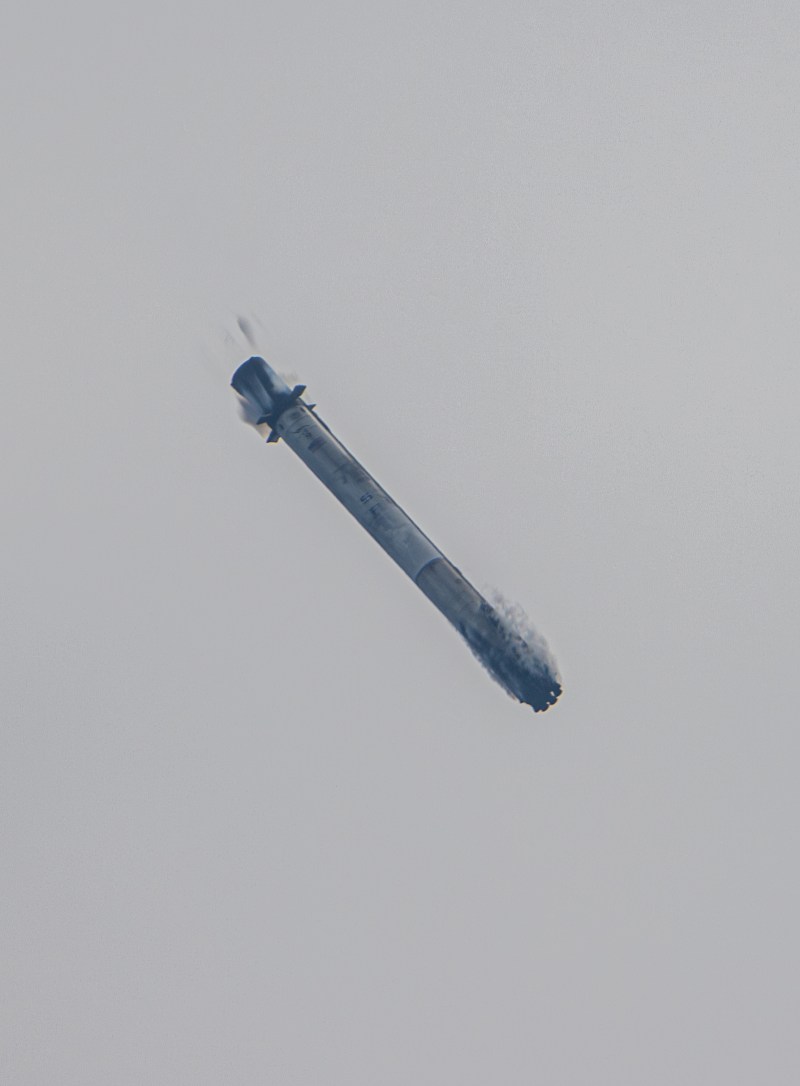Crew-9 Launches Two Astronauts to ISS

Credit: Nickolas Wolf
SpaceX’s ninth crew rotation to the International Space Station is underway, carrying two crew members uphill to the orbiting laboratory. Crew-9 evaded stormy weather to lift off on September 28th, 2024 at 1:17 PM EDT from Space Launch Complex 40 at Cape Canaveral Space Force Station in Florida. The mission is emblematic of the uncertainty that has haunted ISS operations for the past few months, and marks a turning point as NASA works to get life on station back to normal.

Credit: Joe B
Crew-9 consists of NASA astronaut Nick Hague and Roscosmos cosmonaut Aleksandr Gorbunov, riding to space aboard SpaceX’s Crew Dragon Freedom on its fourth flight. The mission was previously delayed from August while NASA and Boeing evaluated the Starliner Crew Flight Test mission. Crew-9 then slipped another two days, from September 26th to 28th, due to the passage of Hurricane Helene through Florida. Despite patchy weather on launch day, the mission lifted off on time aboard SpaceX’s Falcon 9 rocket, completing a nominal ascent through second stage cutoff. Meanwhile, the first stage booster, B1085, navigated to a safe touchdown at SpaceX’s Landing Zone 1 on the Florida coast, completing its second flight.

Credit: Nickolas Wolf
Author’s note: Several hours after launch, SpaceX released a public statement indicating that the Falcon 9 second stage suffered an anomaly during its deorbit burn that caused it to re-enter outside of its targeted disposal area. SpaceX is standing down from launches until further notice; the impact on Falcon’s future manifest is unclear at this time.
The mission has been highly anticipated in the wake of Boeing’s troubled Starliner Crew Flight Test. Despite uncertainty about the performance of its thrusters and a helium leak, NASA remained willing to use Starliner Calypso to return its crew, astronauts Barry “Butch” Wilmore and Sunita “Suni” Williams, in the event of an emergency. However, the decision to return Calypso to Earth uncrewed earlier this month left Wilmore and Williams without a dedicated ride home.
In an emergency, the two could join the four astronauts of Crew-8 to return aboard Crew Dragon Endeavour. But with only four seats installed in the spacecraft, Williams and Wilmore would be forced to ride in the cargo pallet, one of them without a pressure suit. In the past, NASA has gone to great lengths to ensure the number of spacecraft seats matches the number of crew on station to prevent the need for contingencies like this. The arrival of Crew-9 and Freedom, flying with two empty seats, will finally close this uncomfortable gap and ensure all astronauts have a proper ride back to Earth.

Credit: Nickolas Wolf
Crew-9 is set to arrive at the ISS on Sunday afternoon, docking at 5:30 PM EDT on September 29th. Hague and Gorbunov will join Williams and Wilmore, NASA astronaut Don Pettit, and Roscosmos cosmonauts Alexey Ovchinin and Ivan Vagner to complete Expedition 72. They will stay at the ISS for another 6 months, continuing the legacy of groundbreaking research for the benefit of Earth. Crew-9 is set to return with its newfound crew of four in February of 2025. In the meantime, NASA astronauts Matthew Dominick, Michael Barratt, and Jeanette Epps, as well as Roscosmos cosmonaut Alexander Grebenkin, will board Endeavour and undock from station, marking the end of Crew-8’s stay aboard the orbiting laboratory.

Credit: Joe B
Once the handover from Crew-8 to Crew-9 is complete, ISS crew operations can begin to return to normal. Despite the disruption caused by Starliner’s uncrewed return, NASA and its partners have proven their resilience in the face of adversity, making difficult choices to ensure the safety of its astronauts and maintain a continuous American presence in space. Going forward, the next major watch item will be preparations for Crew-10 aboard a brand new Crew Dragon spacecraft, a mission which was pulled forward in time while NASA evaluates the path forward for Starliner. With luck, 2025 may hold both the safe return of Starliner’s first crew, and its first operational crew rotation aboard Starliner-1.
Edited by Nik Alexander



